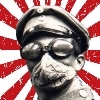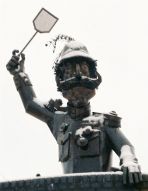
- heltonbiker
- New Member
 Offline
Offline - Registered: 08-9-2015
- Posts: 13
How am I supposed to watch for the bottom margin while typing?
I have had a typing course (with mechanical typewriters) so long ago. I remember receiving some instructions about getting the desired bottom margin, and to get bottom margins of the same size in every page.
But I absolutely can't remember the instructions themselves!
I've been searching the internet for old typing manuals, to no avail. "Bottom margin", these days, always seem to relate to digital word processing.
So the question is: what is the proper way to get a consistent bottom margin while typing? How professional typists are supposed to do it?
- Uwe
- Moderator
 Offline
Offline 
- From: Toronto, Canada
- Registered: 12-3-2013
- Posts: 4,410
Re: How am I supposed to watch for the bottom margin while typing?
This subject was somewhat covered in this thread.
The only thing that I would only add to that information is that I've read a lot of calculations were used by professional typists to make sure everything was properly lined up. For example, take this passage from a 1950s typewriting course: "The dimensions of letterhead paper are 8½" x 11". Since there are six single line spaces to the inch, you will seee that the line capacity of letterhead is 66. You should memorize this information since it will be used when claculation vertical placement."
The pronoun I has always been capitalized in the English language for more than 700 years.
- retro
- Platen Punisher
 Offline
Offline 
- From: Suffolk, England
- Registered: 11-2-2015
- Posts: 66
Re: How am I supposed to watch for the bottom margin while typing?
I think I still qualify for 'professional typist' ![]() . You can put a light pencil tick on the left of the page where you want the last line to be. They also used to sell backing sheets which were wider than the typewriter paper with graduations on each side, the left marked in number of lines and the right in both metric and inches. I recently acquired a machine which had a backing sheet like that which had belonged to somebody who used to teach typing although I don't remember ever using one. Presentation was very important, so when typing a short letter you would leave more space under the letter heading and space it out a little more. In practice if you were typing every day you just judged everything by eye.
. You can put a light pencil tick on the left of the page where you want the last line to be. They also used to sell backing sheets which were wider than the typewriter paper with graduations on each side, the left marked in number of lines and the right in both metric and inches. I recently acquired a machine which had a backing sheet like that which had belonged to somebody who used to teach typing although I don't remember ever using one. Presentation was very important, so when typing a short letter you would leave more space under the letter heading and space it out a little more. In practice if you were typing every day you just judged everything by eye.
- malole
- Inactive Account
 Offline
Offline 
- From: East Anglia, UK
- Registered: 02-6-2014
- Posts: 330
Re: How am I supposed to watch for the bottom margin while typing?
I would make up my own backing sheet. But you also have the option of looking for a typewriter with a bottom-margin marking 'device' on the platen. Usually the left side. I have a Smith Corona Sterling 5 series which has red and green markers and numbers which you can use to work out when you are coming to the end of the page. You set the markers to the relevant size of paper you are using. It's not really a 'device' just clever marks to keep an eye on, but it does work. This manual explains it properly on page 9!
- JoeV
- Touch Typist
 Offline
Offline - Registered: 11-4-2015
- Posts: 152
Re: How am I supposed to watch for the bottom margin while typing?
The Olympia SM-series (at least the ones I've seen) have the flip-up paper support, that has line number markings that can be used for the same purpose.
~Joe
- skywatcher
- Moderator
 Offline
Offline - From: The Prairies of Alberta
- Registered: 14-3-2013
- Posts: 740
Re: How am I supposed to watch for the bottom margin while typing?
Hi Helton
Some of my typewriters have start and finish marks on the left end of the platen roller but others don't, so here's what I do. Take a sheet of 28lb to 32lb white paper for use as your backing paper. Rule in a black line one inch up from the bottom and one inch down from the top on both sides, then rule in a red line 1½" in from the ends. When you're typing with the backing paper in place, you'll see the lines showing through your typing paper. When the red line comes into view, you know you're ½" from the bottom margin and still 1½ from the bottom of the page.
By lining both ends of both sides, the backing paper can be turned over and/or end for end for your next page of typing. This helps prevent the backing paper from developing an unmanageable curl. The distance the black and red lines are drawn from the ends of the backing sheet are entirely up to you, I use 1" and 1½" for my black and red lines as it works for me. You may prefer a 1½" bottom margin (black line) with the red indicator line ¾" or 1" up from the bottom margin, it's purely up to you. Hope this helps and all the best,
Sky
We humans go through many computers in our lives, but in their lives, typewriters go through many of us.
In that way, they’re like violins, like ancestral swords. So I use mine with honor and treat them with respect.
I try to leave them in better condition than I met them. I am not their first user, nor will I be their last.
Frederic S. Durbin. (Typewriter mania and the modern writer)
- KatLondon
- Key Master
 Offline
Offline 
- From: London
- Registered: 11-10-2014
- Posts: 995
Re: How am I supposed to watch for the bottom margin while typing?
Clever!
- heltonbiker
- New Member
 Offline
Offline - Registered: 08-9-2015
- Posts: 13
Re: How am I supposed to watch for the bottom margin while typing?
skywatcher wrote:
Take a sheet of 28lb to 32lb white paper for use as your backing paper.
That is a nice thing to try. I would say "nah, this is too much work", but actually the very manual of the machine suggests the use of a backing paper as a way to preserve the platten and give a better, more homogeneous type print. Adding these lines you mention would give yet another reason to use that paper! Thanks for your answer! (although I still think it is a bit too much work, specially if you are "in the flow", but anyway...)
- •
- Spazmelda
- Key Master
 Offline
Offline 
- From: Ohio
- Registered: 25-2-2015
- Posts: 830
Re: How am I supposed to watch for the bottom margin while typing?
Well, hey... if you are in the flow, you just need a roll of paper and some sort of dispenser. Like Kerouac used to use. Then you only have one bottom margin to worry about per roll of paper. ![]()
- NDW76
- Platen Punisher
 Offline
Offline - From: Bangkok
- Registered: 18-8-2014
- Posts: 86
Re: How am I supposed to watch for the bottom margin while typing?
I found a solution by mistake. I had printed some worksheets for my students and they came out with just one line. Useless as a worksheet, but used as a backing sheet I can see that line through the paper I use. That let's me know when I am almost at the end. But I do like the idea of using a roll of paper.
Pleased to meet you. Call me Nathan.

 1 of 1
1 of 1